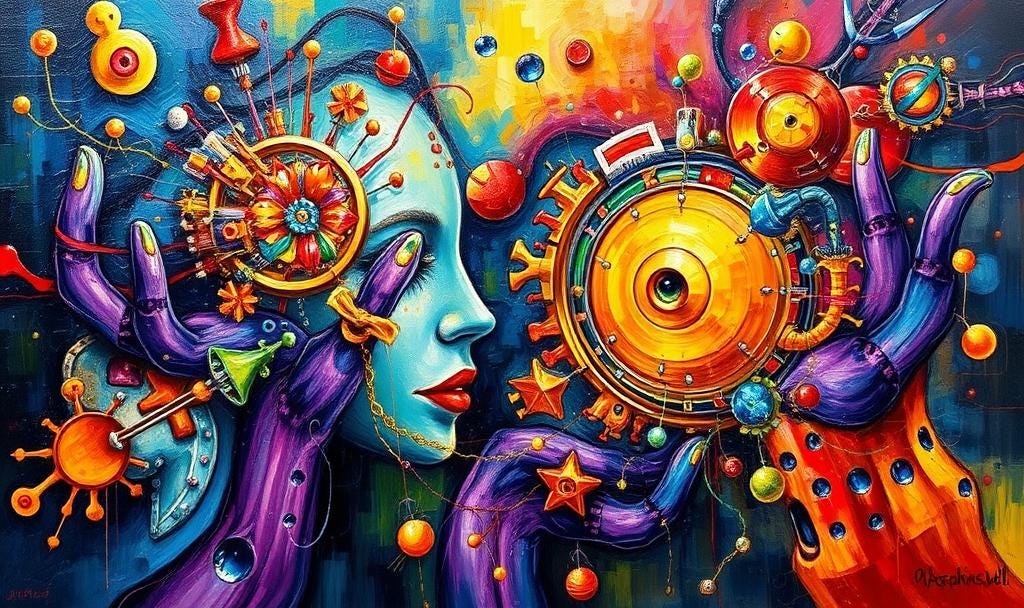The Trillion-Dollar Convergence (AI+Crypto)
1/5 Unicorn Founders Lessons: Why Autonomous AI Agents Will Eat The World (And How Crypto Makes It Inevitable)
From the trenches of IO.NET and beyond: The definitive guide to building the next generation of agent-powered, crypto-fueled startups
The Uncomfortable Truth About The Future
Most AI startups are solving yesterday's problems with tomorrow's technology.
They're building chatbots when they should be architecting autonomous economic actors.
While everyone obsesses over LLM wrappers and prompt engineering, a seismic shift is happening beneath the surface.
Autonomous AI agents aren't just the next wave of software—they're the next wave of economic participants.
And crypto isn't just their fuel; it's their nervous system.
The convergence we witnessed with infrastructure plays like IO.NET was just the opening act.
The main event is autonomous agents that can transact, negotiate, and execute without human intervention.
This isn't science fiction disguised as a business plan.
This is the inevitable economic evolution of intelligent systems.
The Strategic Misalignment Destroying Value
Conventional wisdom says: Build AI tools that help humans make better decisions.
Reality check: The bottleneck isn't human decision-making capacity—it's the friction between intention and execution across digital ecosystems.
Here's what separates winners from wannabes in the autonomous agent economy: understanding that we're not building better calculators.
We're architecting digital organisms that can survive and thrive in economic environments.
The companies positioning themselves at this intersection understand three fundamental principles that most miss entirely.
The Agent-Crypto Synthesis Framework
Traditional software architectures collapse under the weight of true autonomy. You can't build self-directing systems using permission-based models designed for human oversight. The solution isn't technical—it's architectural.
Principle 1: Economic Agency Requires Economic Infrastructure
Autonomous agents need the ability to hold, transfer, and accumulate value independently.
Traditional banking infrastructure treats them as extensions of human accounts.
Crypto infrastructure treats them as first-class economic citizens.
Principle 2: Trust Scales Through Cryptographic Proof, Not Brand Recognition
When agents interact with other agents, they need verifiable reputation systems.
Smart contracts provide immutable execution guarantees that no SLA can match.
Principle 3: Network Effects Compound Through Interoperability, Not Platform Lock-in
The most valuable agent networks will be the ones where agents can seamlessly collaborate across different protocols and platforms.
The IO.NET Blueprint Applied to Agent Networks
Our experience with IO.NET revealed something crucial about infrastructure plays in the AI-crypto space.
The winners don't just solve technical problems—they solve economic coordination problems.
IO.NET succeeded because it created a marketplace where GPU providers and AI developers could transact directly.
The breakthrough wasn't faster compute—it was eliminating the middleman friction that made distributed compute economically unviable.
The same principles apply to autonomous agent networks, but with exponentially higher complexity.
Instead of coordinating static resources, we're coordinating dynamic, intelligent actors with evolving capabilities and preferences.
The Four-Layer Autonomous Agent Stack
Most teams approach agent development like they're building traditional software applications.
This creates fundamental architectural misalignments that become impossible to fix later.
Layer 1: Economic Primitives (Blockchain Infrastructure)
The foundation must support microtransactions, programmable money, and reputation systems. Ethereum is too expensive. Solana has throughput but limited composability. The winning play might be application-specific chains or Layer 2 solutions designed specifically for agent interactions.
Layer 2: Agent Operating System (Coordination Protocols)
This is where most value will be captured. The protocols that enable agents to discover each other, negotiate terms, and execute agreements. Think of it as LinkedIn meets AWS meets contract law, but for AI agents.
Layer 3: Capability Marketplaces (Skill Exchange Networks)
Individual agents will specialize in specific capabilities. The value emerges from the network effects of capability composition. An agent that excels at data analysis partnering with an agent optimized for content generation.
Keep reading with a 7-day free trial
Subscribe to The Kwisatz Herald: 10X AI Founders to keep reading this post and get 7 days of free access to the full post archives.




